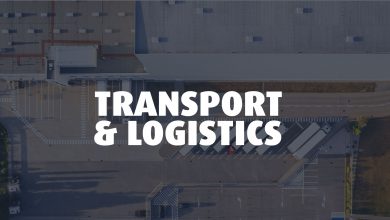Lobster software manages large volumes of data for a cooperation of independent tyre dealers
Changing those tyres: every year in the spring and autumn, the game starts all over again. And if your tyres are found to be worn or too old, new ones are most certainly needed. In order to achieve better pricing terms with the manufacturers, dealers don’t buy tyres individually, but rather in bulk. Cooperative group point S takes control of the ordering process for its members, with a little help from some data integration software known as Lobster_data.
Demand for new tyres is particularly high in October and around Easter time. At point S, up to 3,000 orders arrive daily, which all have to be promptly processed. This immense volume of data cannot be managed manually, as huge amounts of paper would simply swamp administrative staff and take over their desks. That’s why point S regulates the ordering process via electronic data interchange (EDI), using the Lobster_data software solution for these purposes.
Communication in different formats
As a tyre, wheel and car service supplier, point S already worked with large volumes of data. But when it introduced centralised purchasing, the amount of data only increased. “Without Lobster_data, we wouldn’t have been able to master this huge leap in terms of IT technology”, explains Ralf Matwin, IT Manager at point S. All processes, from product selection to ordering and invoicing, are automated and run via head office.
The challenge is that the SAP system at point S speaks a different language to those of its manufacturers and suppliers. Lobster_data converts all incoming data into a format that’s readable by point S and its SAP system, as well as all outgoing data into its partners’ formats. Order confirmations, delivery notes and invoices are all sent out automatically by the system.
Taking the strain off the IT department
Users require no prior knowledge of the programming language involved and can work independently of an external service provider. “We can connect to new partners on our own and, if needed, even change interfaces”, explains Alexander Lukic, IT Application Manager at point S. “We only have to call up the Lobster technicians once a year. And the service we receive is always fast and competent”.
When switching to central purchasing, it quickly became clear that order processing capacity would have to be increased in terms of personnel. point S decided to install an EDI system and assigned five people to order processing. Without that electronic data interchange, around 25 or 26 new employees would have had to be taken on – this would have made central purchasing economically unsustainable.
A direct overview of the system
point S communicates with their suppliers via an Internet-based platform. Among other things, members of the cooperation can select their desired products in real time, knowing exactly whether or not the goods are in stock, and how expensive they are. This is also referred to as Adhoc EDI. “In the past, we’d have to send faxes to get this information, or pick up the phone. Now, all the necessary information is presented exactly as it appears on the suppliers’ systems, and we receive order confirmations in a matter of seconds”, reports Ralf. Furthermore, employees working on processing orders don’t always have to enter master data, such as customer addresses and item numbers, again and again. Lobster_data transfers information as needed from third-party systems and makes it available for the required processes.
This is one tyre dealer that’s gearing up for the traditional seasonal uptake in orders again this year. “We can flexibly respond to peak times with Lobster software – and with very little effort involved. We’re very satisfied”, concludes Ralf.
More Use Cases on our blog.


